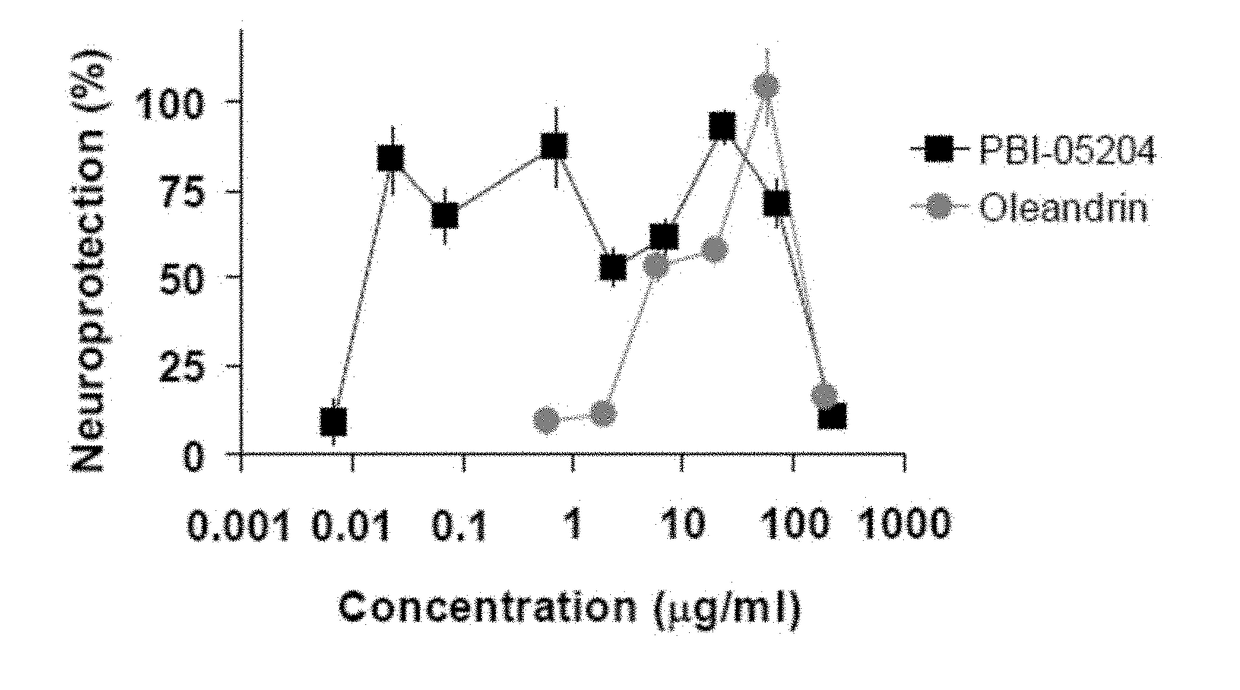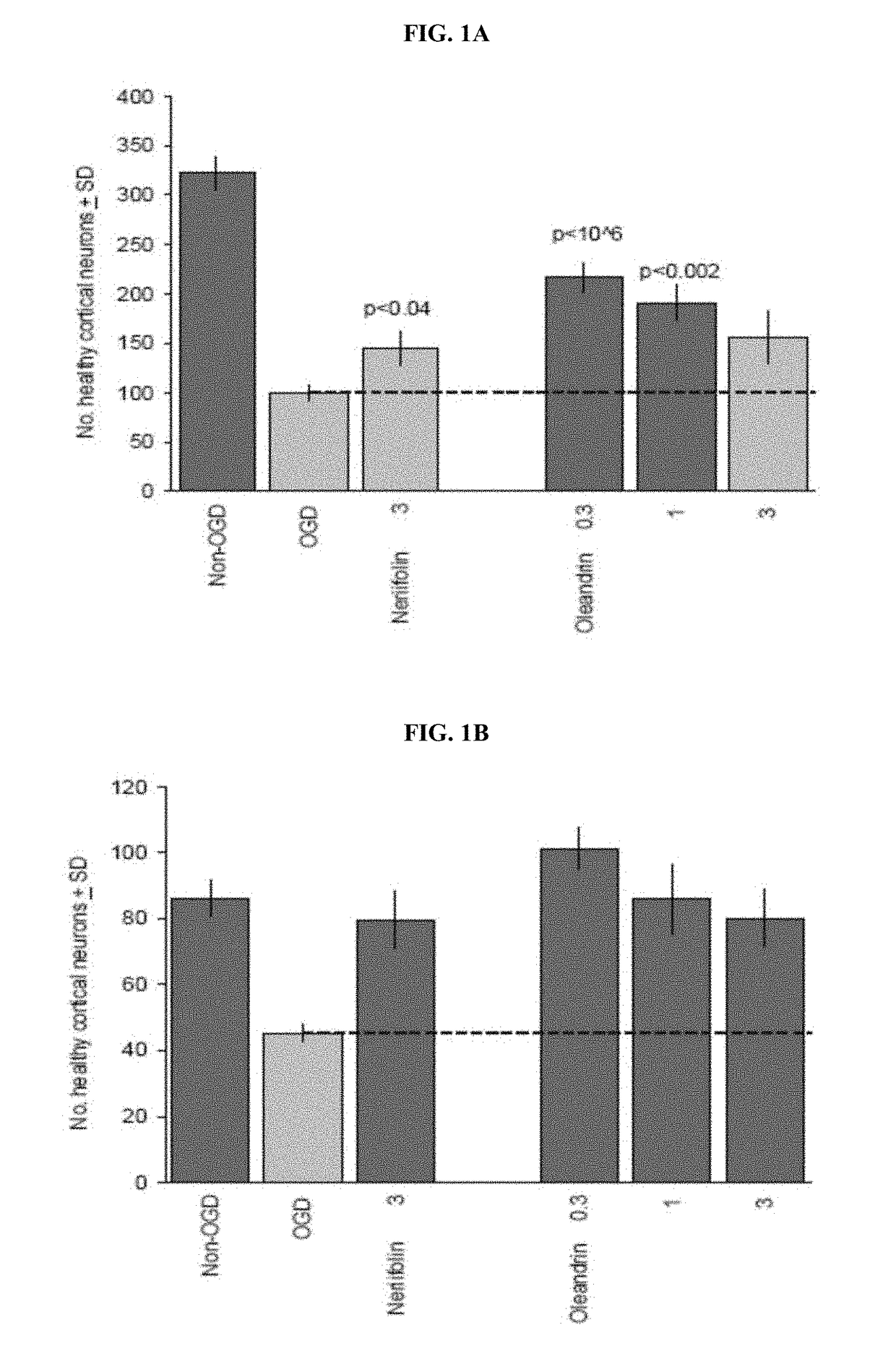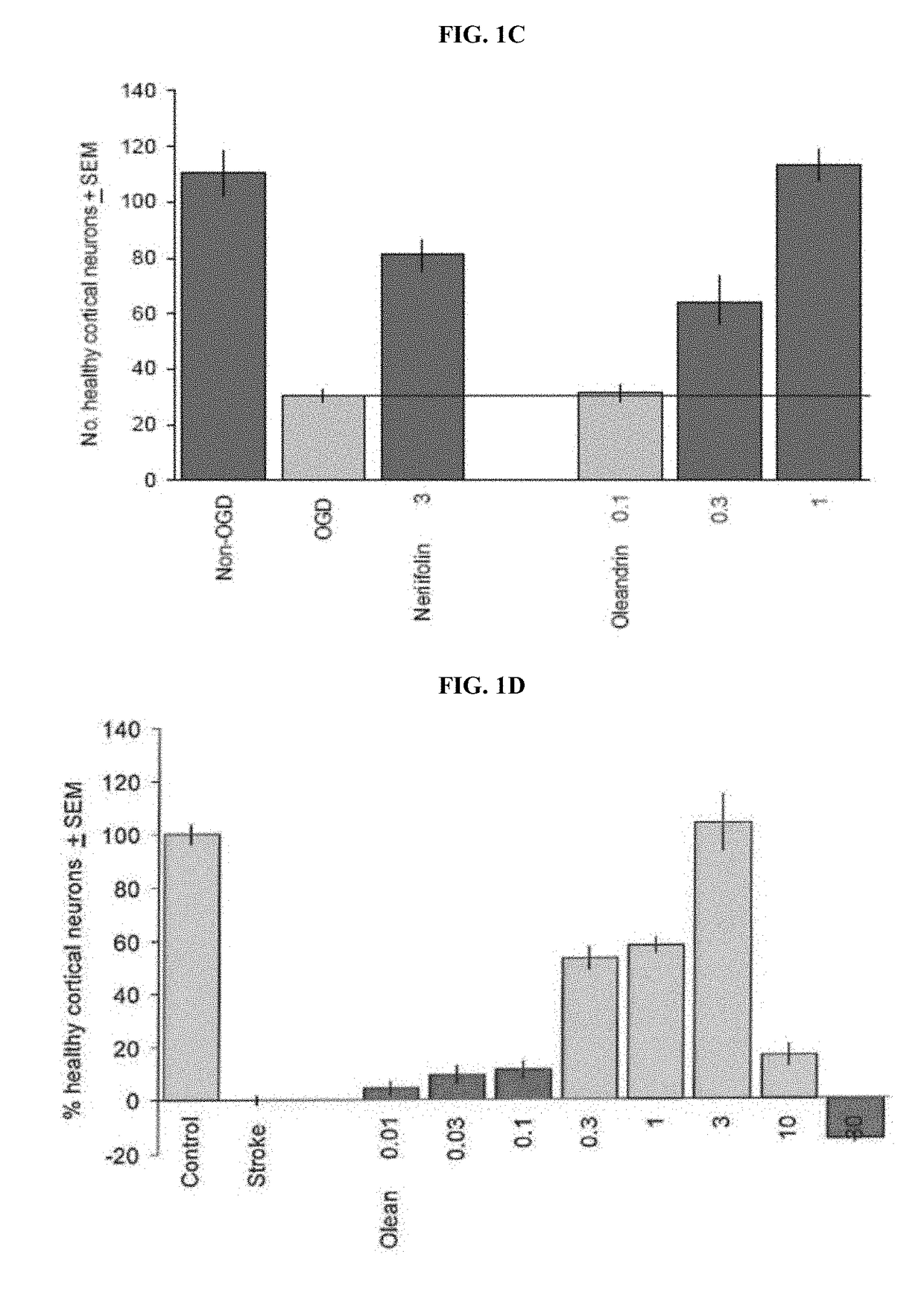Method of Treating Neurological Conditions with Oleandrin
a neurological condition and cardiac glycoside technology, applied in the field of cardiac glycoside compounds for neurological conditions, can solve the problems of no comprehensive or universal curative therapy, no known cure for huntington's disease, no treatment to stop or reverse the course of the disease, etc., and achieve the effect of preventing or reducing the incidence of neurological conditions
- Summary
- Abstract
- Description
- Claims
- Application Information
AI Technical Summary
Benefits of technology
Problems solved by technology
Method used
Image
Examples
example 1
Supercritical Fluid Extraction of Powdered Oleander Leaves
Method A. With Carbon Dioxide.
[0155]Powdered oleander leaves were prepared by harvesting, washing, and drying oleander leaf material, then passing the oleander leaf material through a comminuting and dehydrating apparatus such as those described in U.S. Pat. Nos. 5,236,132, 5,598,979, 6,517,015, and 6,715,705. The weight of the starting material used was 3.94 kg.
[0156]The starting material was combined with pure CO2 at a pressure of 300 bar (30 MPa, 4351 psi) and a temperature of 50° C. (122° F.) in an extractor device. A total of 197 kg of CO2 was used, to give a solvent to raw material ratio of 50:1. The mixture of CO2 and raw material was then passed through a separator device, which changed the pressure and temperature of the mixture and separated the extract from the carbon dioxide.
[0157]The extract (65 g) was obtained as a brownish, sticky, viscous material having a nice fragrance. The color was likely caused by chlorop...
example 2
Hot-Water Extraction of Powdered Oleander Leaves
[0161]Hot water extraction is typically used to extract oleandrin and other active components from oleander leaves. Examples of hot water extraction processes can be found in U.S. Pat. Nos. 5,135,745 and 5,869,060.
[0162]A hot water extraction was carried out using 5 g of powdered oleander leaves. Ten volumes of boiling water (by weight of the oleander starting material) were added to the powdered oleander leaves and the mixture was stirred constantly for 6 hours. The mixture was then filtered and the leaf residue was collected and extracted again under the same conditions. The filtrates were combined and lyophilized. The appearance of the extract was brown. The dried extract material weighed about 1.44 g. 34.21 mg of the extract material was dissolved in water and subjected to oleandrin content analysis using high pressure liquid chromatography and mass spectrometry. The amount of oleandrin was determined to be 3.68 mg. The oleandrin y...
example 3
Treatment of Neurological Condition Including but not Limited to Alzheimer's Disease
Method A. Cardiac Glycoside Therapy
[0164]A subject presenting with Alzheimer's disease is prescribed cardiac glycoside, and therapeutically relevant doses are administered to the subject according to a prescribed dosing regimen for a period of time. The subject's level of therapeutic response is determined periodically. If the level of therapeutic response is too low at one dose, then the dose is escalated according to a predetermined dose escalation schedule until the desired level of therapeutic response in the subject is achieved. Treatment of the subject with cardiac glycoside is continued as needed and the dose or dosing regimen can be adjusted as needed until the patient reaches the desired clinical endpoint.
Method B. Combination Therapy: Cardiac Glycoside with Another Agent
[0165]Method A, above, is followed except that the subject is prescribed and administered one or more other therapeutic ag...
PUM
| Property | Measurement | Unit |
|---|---|---|
| molar ratio | aaaaa | aaaaa |
| molar ratio | aaaaa | aaaaa |
| concentration | aaaaa | aaaaa |
Abstract
Description
Claims
Application Information
 Login to View More
Login to View More - R&D
- Intellectual Property
- Life Sciences
- Materials
- Tech Scout
- Unparalleled Data Quality
- Higher Quality Content
- 60% Fewer Hallucinations
Browse by: Latest US Patents, China's latest patents, Technical Efficacy Thesaurus, Application Domain, Technology Topic, Popular Technical Reports.
© 2025 PatSnap. All rights reserved.Legal|Privacy policy|Modern Slavery Act Transparency Statement|Sitemap|About US| Contact US: help@patsnap.com



